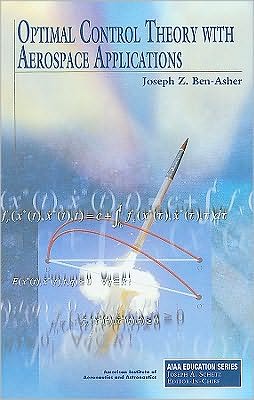

 |

|

The average rating for Optimal Control Theory with Aerospace Applications based on 2 reviews is 3 stars.
Review # 1 was written on 2011-08-12 00:00:00 Lori Batton Lori BattonRockets: Two Classic Papers is a collection of two papers by Robert H. Goddard. The book applies mathematics and physics to the practical problem of attaining sub-orbital heights with Rockets. Although he was ridiculed by the press and encountered indifference from his colleagues, Goddard persevered in times of trouble and continued to make adjustments, studying all the while. The first paper is called "A Method of Reaching Extreme Altitudes." This is Rocket Science in its nascent stages. It was the first time someone tried to apply the methods of engineering to such a problem, but that doesn't really show here. Goddard employs the same tools and techniques that modern Rocket Scientists would use, only this was published in 1919. It isn't as though Physics has changed all that much. While it is true that Quantum Mechanics was fleshed out, that doesn't really have a bearing on Rocket Science. The math is easy enough to follow, and the variables used are all explained. The only Greek letter I was able to spot so far was rho, for air density. The final summary tells it like it is, and states that Rockets are useful for this application. Rockets are more useful than Balloons since Balloons require air to displace and the upper atmosphere quickly loses that as you gain altitude. The second paper is titled "Liquid-Propellant Rocket Development." This paper was published in 1935 and contains a report on his experiments into rockets. Contained throughout both papers are several images documenting his patents and the locations of his experiments. |
Review # 2 was written on 2012-06-03 00:00:00 Summer Omlin Summer Omlin(This review is of the EPUB version, which I created myself.) The greatest strength of this book is its focus'it deals with the Saturn launch vehicles and very little else. As the title suggests it's also fairly technical and doesn't cater to the casual reader, so some basic knowledge of how rockets work is probably required. The stories of the engines and stages are the most fascinating, with many accounts of new problems and their eventual solutions. Most surprising to me was the challenges associated with liquid hydrogen. At −253°C (20K), if the fuel tanks or fuel lines aren't properly insulated, it will liquefy air and solidify liquid oxygen, both of which are bad news. Another bit of scary hydrogen trivia: There was an added, perverse character about leaks that produced hydrogen fires'in daylight, the flame was invisible. It was possible to inadvertently blunder into the searing flame. … But how to detect an invisible fire? … SACTO had a special examination crew, outfitted with protective clothing and equipped with brooms. The men "walked down" the stage, from the top scaffolding to the bottom, extending their brooms ahead of them. If the broom suddenly sprouted into flame, the men knew they had discovered a hydrogen leak. Still, accidents could happen, even when extra precaution was taken. On the non-technical side, I was surprised to learn how many different private contractors were involved. I had imagined that the Saturn V was built by NASA itself, but actually each stage was built by a different contractor, who in turn had many sub-contractors. The one area where there doesn't seem to have be much competition is rocket engines, all of which were built by Rocketdyne, who also went on to build the SSME. Next, I'm going to read Chariots for Apollo: A History of Manned Lunar Spacecraft to learn more about the payload of the Saturn V, the CM and LM. |
CAN'T FIND WHAT YOU'RE LOOKING FOR? CLICK HERE!!!